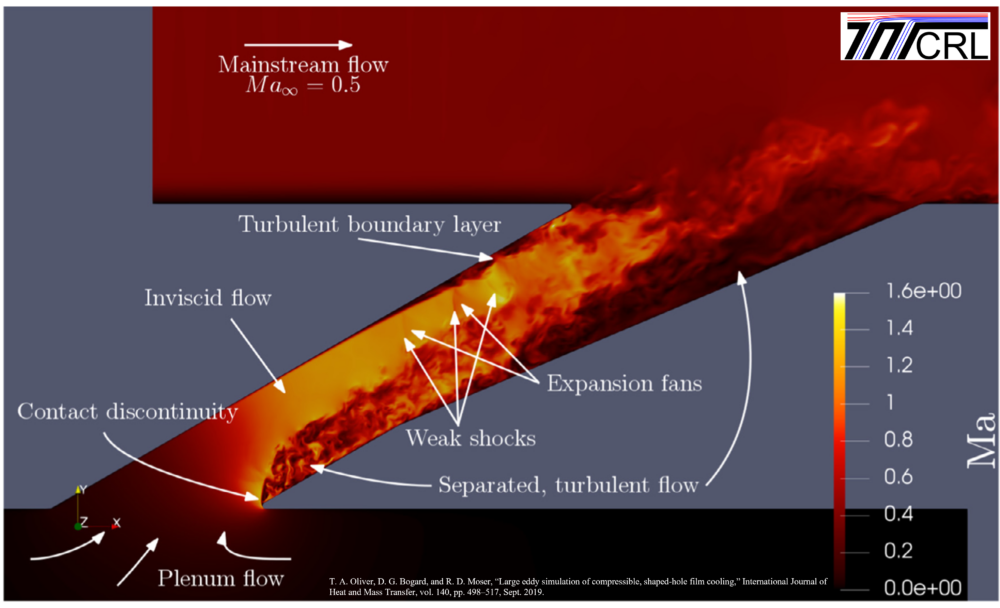Research Focus:
TTCRL specializes in quantifying and improving the cooling of gas turbine engine components. We explore numerous avenues of gas turbine cooling and specialize in characterizing film cooling performance of gas turbine blades and vanes. This lab is unique in that the research is a blend of both experimental and computational work.
Recent research at TTCRL focuses on:
- The design of film cooling holes
- Configurations of various film cooling designs
- High Mach number effects on film cooling performance
- Performance and feasibility of additively manufactured cooling configurations
- Effect of thermal barrier coatings on film cooling performance
What is film cooling?
The inlet temperature to the turbine section of a modern jet engine far exceeds the material limits of components, necessitating some form of active cooling. To prevent premature failure, cooler air is bled from the compression section of an engine and routed inside the cavities of rotating turbine blades and stationary guide vanes. This coolant air flows through internal passageways, drawing heat from the material and thereby reducing the outer wall surface temperature. Spent coolant is ejected through small holes on the outer surface. Holes are specifically designed to create a film of cool air on the surface of the blade.
Why is gas turbine cooling needed?
Gas turbine engines are primarily used in electric power generation and in airplane engines due to their high reliability and efficiency. Both systems operate on the principle that the turbine section inlet temperature is proportional to the net power output. As such, engineers seek to drive the inlet temperature higher and higher. The temperature of the main gas path of modern engines, approximately 2700°F, is much greater the maximum allowable temperature components can function properly considering thermal and mechanical stresses. Thus, turbine blades must be actively cooled during operation to prevent premature failure.
Application to the Renewable Energy Sector:
As the world is moving away from fossil fuels, one promising renewable fuel of the future is hydrogen. One issue pertaining to hydrogen in the gas turbine sector is that hydrogen burns hotter than conventional fuels used today such as natural gas and jet fuel. As such, if hydrogen is to be the fuel of choice in the gas turbine field more innovation must be done to actively cool the blades further.
